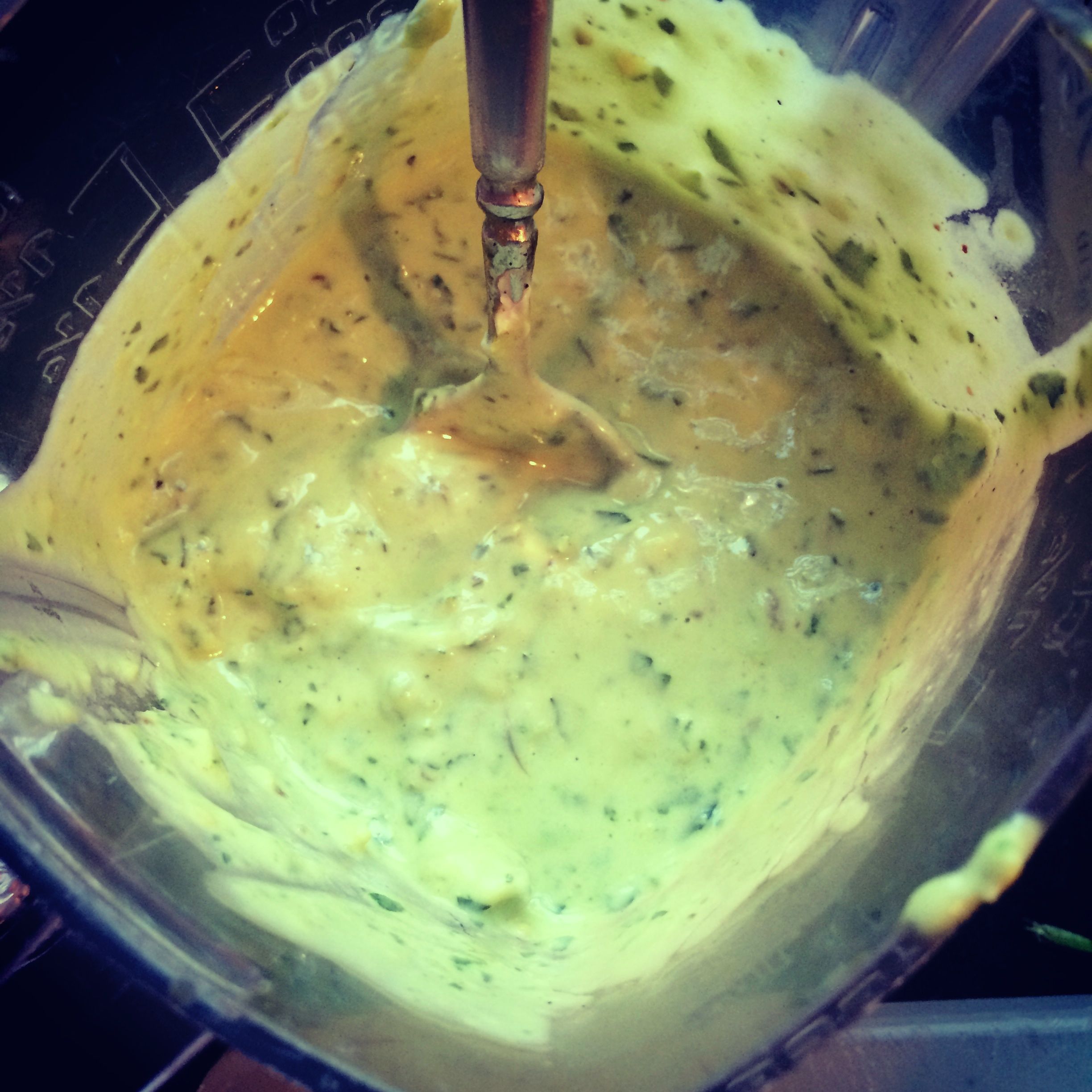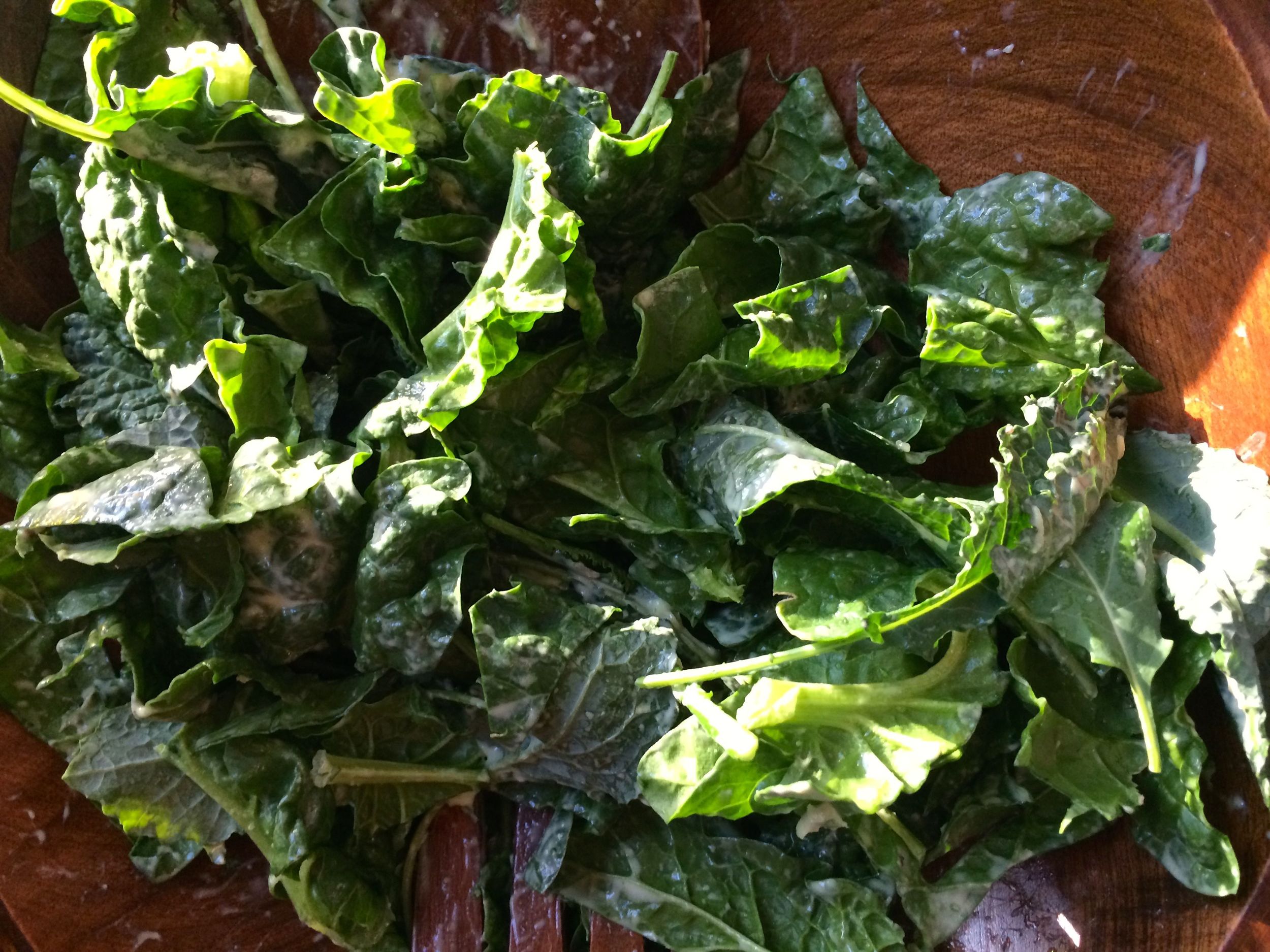The Greenest Goddess Dressing
carrie
It's spring. Things are greening, finally. Greens galore are here at farmers' markets in Pennsylvania. We'll have to wait for the rest (radishes, herbs, beets, carrots and potatoes, etc.) until it warms up a bit. But for now, we have our pick of greens. A couple of weeks ago, tired of the usual variations on oil and vinegar, I hacked a green goddess dressing. I received some "recipe please!!" comments after posting a pic on Instagram where it was adorning some quasi-grilled romaine (another story altogether; the gas ran out mid-char). I figured I'd return to this project.
Green goddess goes all the way back to the 1920s and had a good run in the 1970s-80s, but is experiencing something of a resurgence right now—with some twists, of course. You typically see it with cobb salads and others with sturdy greens that can withstand a substantive dressing and whose leaves provide all sorts of crevices and crannies for the dressing to get lost in. It would also work well as a veggie or pita chip dip, or as the binding agent for some manner of tuna or chicken salad, should you wanna roll that way, too.
The modern versions, like this one, often include heart-healthy avocado; classic elements typically feature anchovies, fresh spring herbs, mayo, sour cream, and lemon juice. (I think I even recently saw a twist on this with pureed green peas.) They don't typically include water or olive oil, but I found I needed both. By design, this recipe includes the minimum amount of mayo required before it got too gloppy and mayo-ey (plus olive oil lends some fresh zip and helps with emulsifying). And I had an avocado just this side of perfectly ripe and smushy, so the little bit of water helped break things down. As you can see, I didn't make it completely smooth, mostly because I was scrambling to get dinner on the table to several hungry and really tired campers. Sometimes aesthetics go out the window. If I had had more time, I would have snipped off some chives from the yard or the tops of green onions for a little more bite. In fact, why don't you go do that and please, let me know what you think?
Ingredients
- 1/2 of an avocado
- Zest and juice of one lemon
- 1-2 garlic cloves
- 1/3 cup plain Greek yogurt (or sour cream)
- 1/4 cup organic mayo (homemade or otherwise)
- 1/4 cup water
- 1 large handful parsley (about a 1 cup, stems included)
- Several pinches of kosher salt and freshly ground black pepper
Directions:
1. Put all ingredients into a food processor or blender, and let 'er rip. You should get about 3/4 cup of dressing, which you can keep stored in the fridge in a sealed container and it should be good for about a week.
Sunday involved yoga, a great big brunch at a friend's house with park time, and an afternoon surprise event involving a swarm of bees in the yard that required emergency rescue and relocation. All of a sudden, it was 6 o'clock and there was no acceptable dinner plan. So, last night's dinner wound up being two take-out pizzas from Sette Luna with a salad I threw together of fresh local spinach from Jett's Produce and not quite baby lacinato kale. The farmer I bought it from, Tom Murtha of Blooming Glen, called it "teenager kale" because it was not the full, frondy lacinato kale we know, nor was it baby kale, whose smaller leaves are sweet and typically tricky to find. They both served as willing recipients of the 2-3 tablespoons of dressing I used here.




